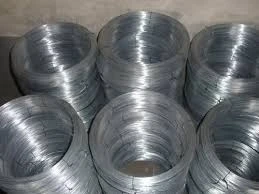Understanding the Various Sizes of Steel Mesh for Construction and Design Applications
Understanding Steel Mesh Sizes and Their Applications
Steel mesh, often referred to as wire mesh, plays a crucial role in various construction and engineering applications. Its versatility and strength make it an ideal choice for reinforcing concrete, forming barriers, and essential scaffold support. However, understanding the different sizes and specifications of steel mesh is critical for ensuring that it meets the specific needs of a given project.
Types of Steel Mesh
Steel mesh is typically categorized into several types based on its application welded wire mesh, woven wire mesh, and expanded metal mesh. Each type has distinctive properties and uses.
1. Welded Wire Mesh This type consists of intersecting wires that are welded at the junctions, providing a strong, stable structure. It is often used in concrete reinforcement, including floors, ceilings, and walls, due to its high tensile strength and rigidity. The sizes of welded wire mesh come in various gauges and diameters, usually specified by the spacing between the wires. For instance, a common size is 6 x 6 inches, where the numbers represent the spacing between the wires in inches.
2. Woven Wire Mesh Unlike welded wire mesh, woven wire mesh consists of wires that are woven together without welding. This type is often utilized in applications requiring a light-weight material, such as fencing and security mesh. The size of woven wire mesh is defined by both the diameter of the wire and the opening size. For example, a 1-inch by 1-inch opening with a 14-gauge wire diameter refers to the size and strength of the mesh.
3. Expanded Metal Mesh This is formed from a sheet of metal that has been cut and stretched to create a mesh pattern. Expanded metal is valued for its aesthetic appeal and slip resistance, making it suitable for flooring applications, stair treads, and decorative features. The sizes in expanded metal refer to the dimensions of the diamond openings as well as the thickness of the metal sheet used.
steel mesh sizes

Choosing the Right Size
Selecting the appropriate steel mesh size requires understanding the application's requirements. Factors such as load-bearing capability, spacing, and environmental conditions must be considered. A larger mesh size may suffice for lightweight applications, while heavier loads necessitate a smaller, denser mesh with thicker wire.
For instance, in road construction, where heavy machinery and considerable weight are applied, tighter mesh sizes, like 4 x 4 inches or even 2 x 2 inches, may be used to provide additional support. Conversely, in residential fencing, a more open size, such as 2 x 4 inches, may be adequate.
Standards and Regulations
When working with steel mesh, it's also essential to adhere to local building codes and industry standards. Regulations may dictate minimum requirements for mesh size and strength in construction to ensure the safety and integrity of structures. Compliance with these standards not only secures the safety of buildings but also enhances their durability.
Conclusion
In summary, understanding steel mesh sizes and their applications is vital for ensuring effective use in various projects. Whether it’s welded, woven, or expanded metal mesh, the correct choice depends on the specific requirements of the application. It is imperative for builders, engineers, and architects to consider factors such as load, environment, and regulatory standards to select the right type and size of steel mesh. By doing so, they can ensure structural integrity and longevity in their projects, contributing to a safer built environment.
-
Why Choose a Wire Mesh Fence for Your PropertyNewsApr.09,2025
-
The Versatility and Strength of Wire MeshNewsApr.09,2025
-
The Strength and Durability of Galvanized WireNewsApr.09,2025
-
The Essential Guide to Iron NailsNewsApr.09,2025
-
The Benefits of Welded Wire Mesh PanelNewsApr.09,2025
-
Reliable Roofing Solutions with Roofing NailsNewsApr.09,2025




